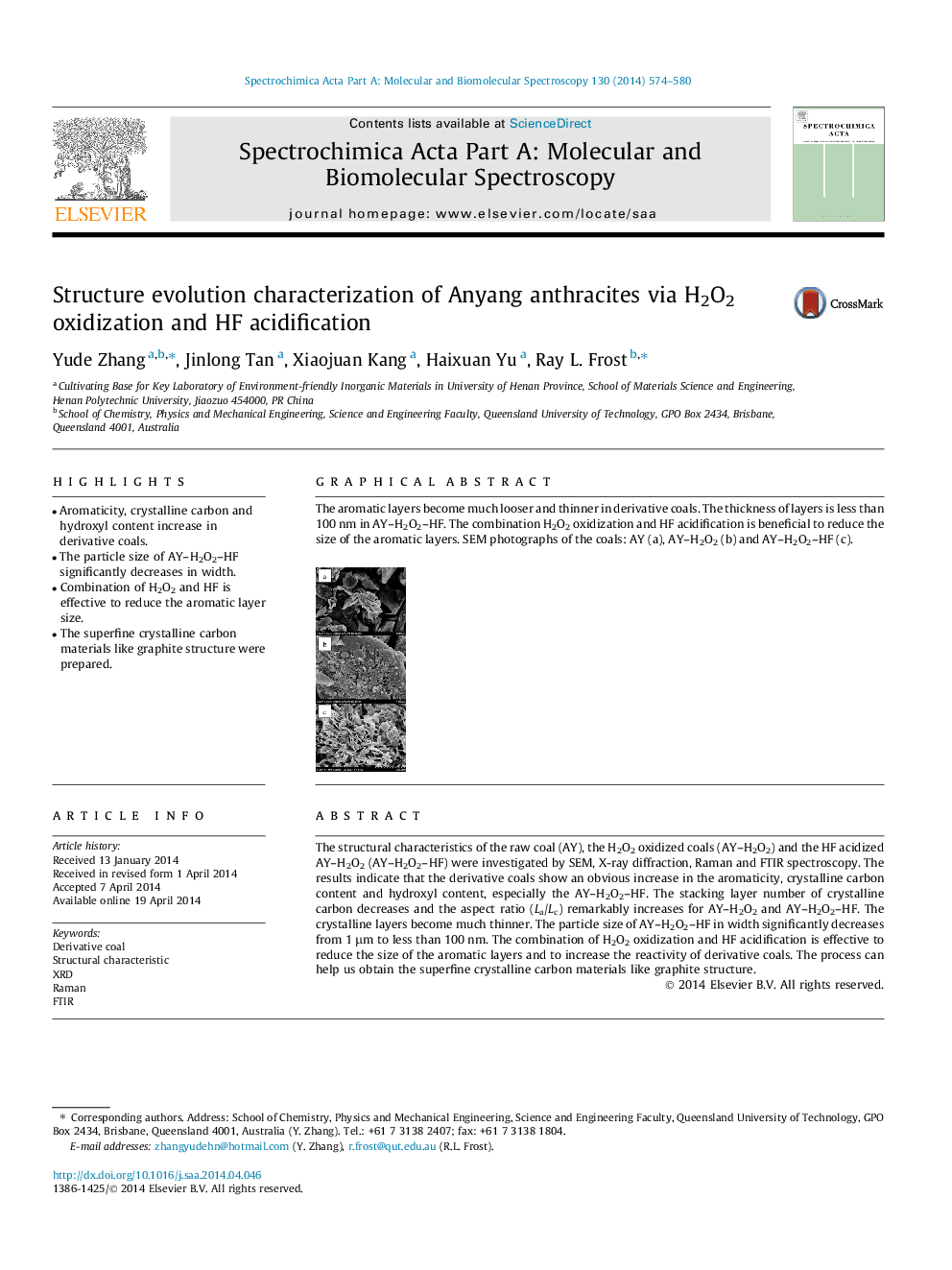| Article ID | Journal | Published Year | Pages | File Type |
|---|---|---|---|---|
| 1230390 | Spectrochimica Acta Part A: Molecular and Biomolecular Spectroscopy | 2014 | 7 Pages |
•Aromaticity, crystalline carbon and hydroxyl content increase in derivative coals.•The particle size of AY–H2O2–HF significantly decreases in width.•Combination of H2O2 and HF is effective to reduce the aromatic layer size.•The superfine crystalline carbon materials like graphite structure were prepared.
The structural characteristics of the raw coal (AY), the H2O2 oxidized coals (AY–H2O2) and the HF acidized AY–H2O2 (AY–H2O2–HF) were investigated by SEM, X-ray diffraction, Raman and FTIR spectroscopy. The results indicate that the derivative coals show an obvious increase in the aromaticity, crystalline carbon content and hydroxyl content, especially the AY–H2O2–HF. The stacking layer number of crystalline carbon decreases and the aspect ratio (La/Lc) remarkably increases for AY–H2O2 and AY–H2O2–HF. The crystalline layers become much thinner. The particle size of AY–H2O2–HF in width significantly decreases from 1 μm to less than 100 nm. The combination of H2O2 oxidization and HF acidification is effective to reduce the size of the aromatic layers and to increase the reactivity of derivative coals. The process can help us obtain the superfine crystalline carbon materials like graphite structure.
Graphical abstractThe aromatic layers become much looser and thinner in derivative coals. The thickness of layers is less than 100 nm in AY–H2O2–HF. The combination H2O2 oxidization and HF acidification is beneficial to reduce the size of the aromatic layers. SEM photographs of the coals: AY (a), AY–H2O2 (b) and AY–H2O2–HF (c).Figure optionsDownload full-size imageDownload as PowerPoint slide
